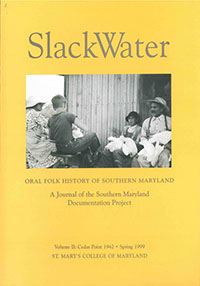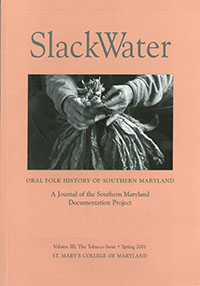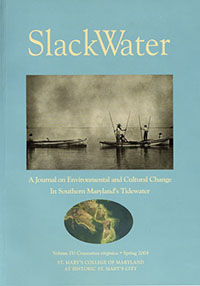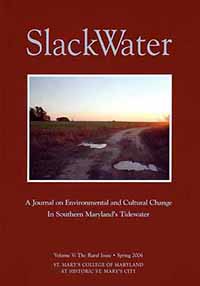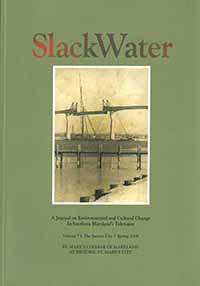The Instant City
An Online Exhibit
Lexington Park is The Instant City. At least that's how artist Charlie Hewitt and members of the Creative Arts Forum described Lexington Park in the mid-70s. In an oral history interview, Hewitt, who grew up in St. Mary's County, talked about coming from the military world:
"I hung out with kids from Lexington Park. I hung out on the streets at night, on Friday, Saturday nights when the town was full of bars and slot machines and drunken sailors. It was a different place. It wasn't a bad place, but it wasn't a place about ducks and boats and crabs and oysters. It was the inside of the beast. I found that to be noble and dignified and worth talking about."
And so do we. SlackWater VI: The Instant City explored (to borrow the Creative Arts Forum's words) "the cultural impact of the Instant City on St. Mary's County" in print form. This online exhibit brings some of those essays and images to the website.
Between the Tides, by Zachary Pajak
Volume editor Zachary Pajak leads the exhibit with his thoughts about the 'slackwater' metaphor and what he learned about Lexington Park and St. Mary's County in the 1960s and 70s.
Memo To Another Generation, by Elizabeth Kohlway
Elizabeth Kohlway's interview with former Enterprise editor Don Hymes and his wife, reporter Val Hymes, describes how, in 1957, the Leonardtown "political machine" filed criminal charges against the newspaper to pressure it into silence. The Enterprise fought back.
Knights of the Round Table, by Alexandra Todak and Julia A. King
What made Lexington Park great? It had become ground zero in the creation of jobs, and jobs begat consumers, and consumers begat stores. Here Lexington Park's first movers and shakers recall just how on fire the place was.
Civil Rights, the Environment, and the Arts
It wasn't all just business. Civil rights, environmental awareness, and the arts were very much on the minds of the region's residents.
Forty years later, what lessons have been learned from LP City?


